Indiana University Libraries Book Repair Manual
Cut Pages
Often we receive books that have the pages folded double at one or more of the outer edges of the text block (the top, bottom, and/or fore edge). Obviously, this prevents the book from being useable. The remedy is a treatment called simply a "cut pages," which involves just what one would expect. An example of such a book, as well as with our method of dealing with it, are shown below. We can see that the pages of this book are adjoined at both the top edge and the fore edge. Preparation for scanning is another case in which a cut pages is performed. The procedure is the same as that illustrated, but while books of the above category are normally cut at any edge except the spine, those which are being prepared for scanning are normally cut only at the spine edge. The purpose of doing this is to disbind the book, turning the text block into loose leaves that will lie flat on the scanner bed.
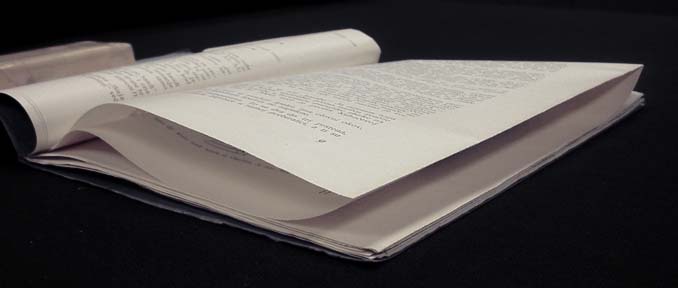
Tools Needed: |
Materials Needed: |
|
 | The cutting is done by a guillotine. |
 | The book is positioned in the guillotine. We will be cutting the top edge first. |
 | A piece of board is placed over the book to shield it from pattern compression of the hold-down. If not thus shielded, the hold-down will stamp its imprint into the top surface of the work being cut. |
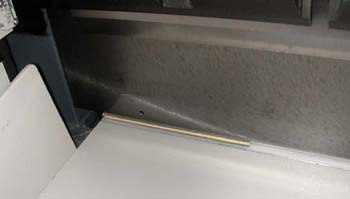 | The hold-down is lowered into place, either by manual or mechanical means. |
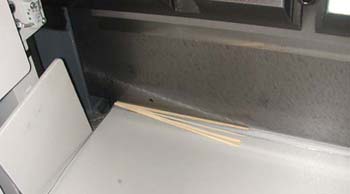 | And the pages are cut. |
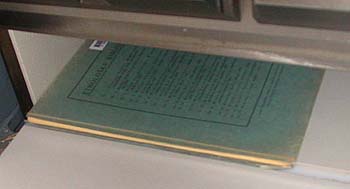 | We now reposition the book to cut the fore edge. Note the light mark near the fore edge. This is the guillotine's locator beam, a light beam which shows where the cut will be made. |
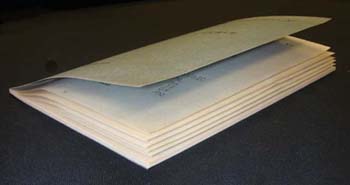 | The pages are now free to open, and the book is ready to circulate. |